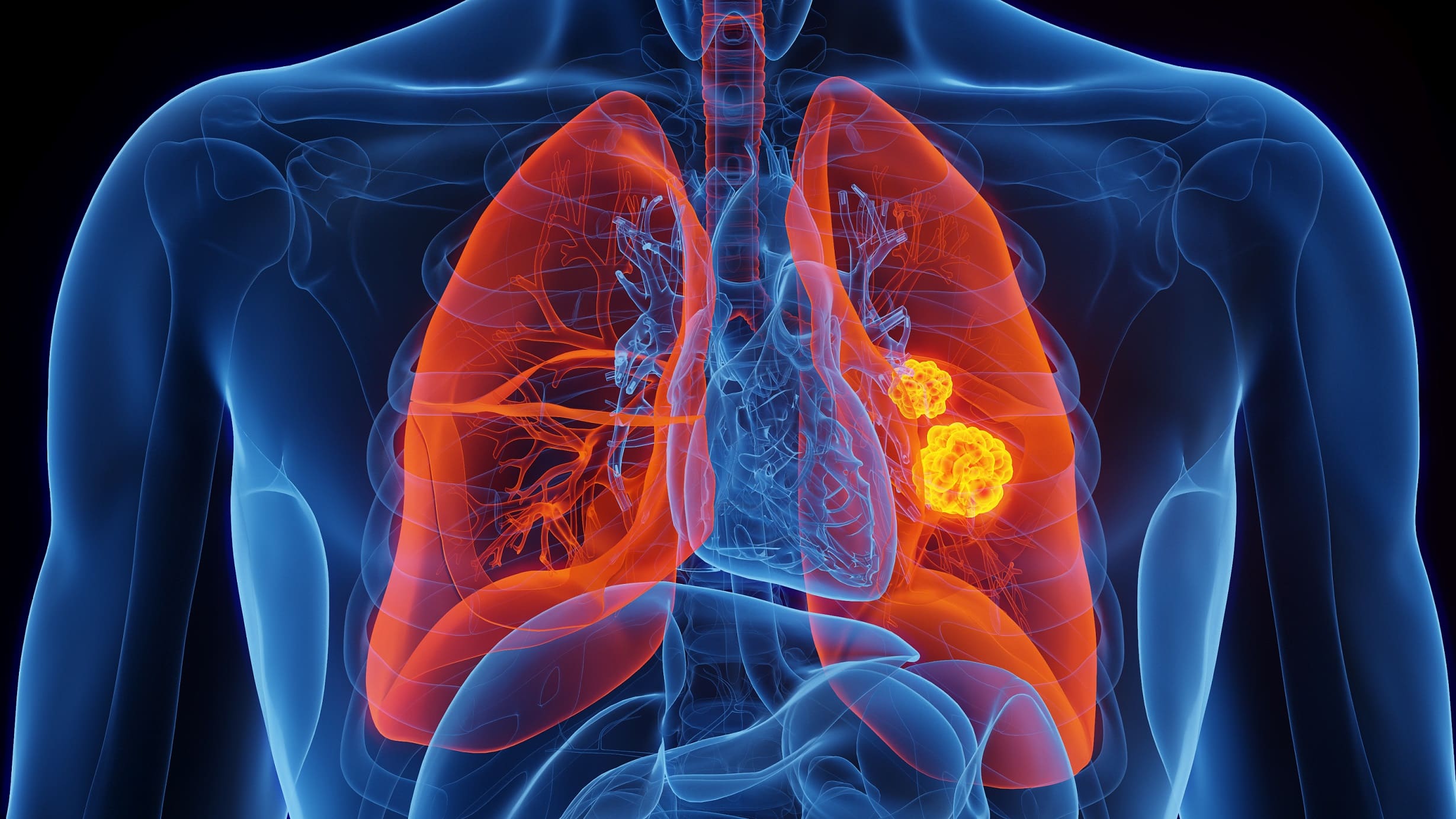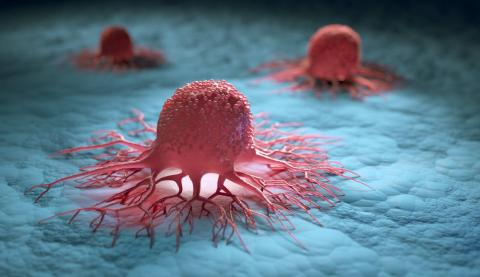Reactions: genomic evolution of lung cancer under scrutiny
Seven studies published in Nature and Nature Medicine look at how lung cancer evolves, with genomic studies of more than 1,600 tumour samples taken from 421 patients in the TRACERx project. The research includes the most common type of lung cancer (NSCLC) and assesses why tumours sometimes recur, spread to other parts of the body or the effects of platinum-based chemotherapy.

Inmaculada Ibáñez de Cáceres - cáncer pulmón evolución EN
Inmaculada Ibáñez de Cáceres
Head of the Cancer Epigenetics Laboratory at INGEMM and coordinator of Experimental Therapies and Biomarkers in Cancer at IdiPAZ, La Paz University Hospital
This study was based on prospective samples from patients with NSCLC (non-small cell lung cancer), from localised stages (lineages 1 and 2) and both tissue and blood samples were taken throughout the pathology in those patients who relapsed after surgery (lineage 3) and in those who relapsed after treatment (lineage 4). The study has collected tissue and blood samples, and molecular studies have been done at the genomic, transcriptomic and free tumour DNA circulating in blood level, comparing patients who have not relapsed with those who have relapsed, mainly to platinum-based therapy. In all cases, the clinical variables of response to treatment have focused on the study of patients' overall survival or disease-free survival (until relapse).
The results are directed towards the genetic characterisation of the initial clones and subclones and those that subsequently prevail in metastases, in relation to tumour heterogeneity. They differentiate between early divergence metastases, which are those that appear before the priority clone has been established in the early tumour. Those that appear later or those that maintain characteristics of many clones are associated with poorer survival. They identify as early or truncal events those related to alterations in the MYC gene and alterations in the genes involved in the tyrosine kinase pathways, well known as activators of cell signalling pathways of survival in cancer, while the also well known alterations such as P53, KRAS are related to subclonal events and, therefore, with worse survival.
Interestingly, these results seem to indicate that lymph node metastases do not appear to be a causal pathway for future recurrences, but rather a fingerprint to identify patients with a more aggressive tumour prognosis.
At the transcriptomic study level, they identify alterations in the expression of specific transcripts of the same gene which, in cases where the origin of the alteration is not genetic (i.e. not due to copy number variations or similar alterations), are related to genes related to the epigenetic regulation machinery that affects DNA methylation and preferably histones.
Regarding the alterations observed in metastases that appear or are maintained after receiving platinum-based treatment, they also confirm data previously reported in the literature, centred on the fact that these treatments produce drastic evolutions in tumours, the appearance of resistance and, therefore, greater heterogeneity.
One of the strengths of these studies is the large sample size (421 patients) that allows access to tissue samples from second surgeries, which in most studies are so limited that they lack statistical power. In this study, we were able to sequence second surgeries from 48 patients out of the total number of patients recruited. Also the use of software and computer algorithms that allow to see the clonal marks in circulating tumour DNA of patients with localised tumours, in which these alterations are very poorly represented, since less than 1% of the circulating free DNA is of tumour origin in metastatic patients. They also report that in local tumours, early divergence metastases may already exist that can be confused with the initial primary tumour as these would have arisen when the diameter of the primary tumour was smaller (8 mm) than the threshold for CT detection, which could limit their use in the early detection of these metastases. On the other hand, the patterns of clonal alterations they carry could be the axis on which to follow up before a distal metastasis has implanted and, above all, to define treatments in untreated primary tumours.
One of the weaknesses is that plastic alterations derived from epigenetic processes, especially those that occur after cancer treatments, are not considered. It is well known that chemotherapy treatments produce genome-wide alterations, such as loss of entire chromosome arms, which drastically affect tumour heterogeneity. However, these treatments are also associated with epigenetic alterations that affect DNA methylation and thus the silencing of numerous gene regions, and also affect non-coding RNAs such as miRNAs, which are post-transcriptional regulators of a very large number of messenger RNAs. It would also be of great interest to address in liquid biopsy the content of extracellular vesicles, a compartment that more closely reflects the characteristics of the tumour of origin than ctDNA (circulating tumour DNA).
Declares no conflict of interest with any of the articles or their authors.
Alberto Jiménez Schuhmacher - cáncer pulmón evolución EN
Alberto J. Schuhmacher
ARAID researcher and head of the Molecular Oncology Group at the Aragón Health Research Institute (IIS Aragón)
The work is fascinating and very robust. In recent years we have seen how tumours that looked like the same disease to us, when looked at under the microscope, had different genetic alterations and could therefore be treated differently with greater success. Furthermore, we have learned that a tumour is heterogeneous and not all cancer cells within the same tumour are the same. This diversity, this intratumoural heterogeneity, allows some tumour cells to survive some treatments and yet be sensitive to others. In cancer, Darwinian evolution takes place in a 'beastly' way. The 'natural selection' of tumour cells is to adapt to the microenvironment, avoid the immune system and resist new treatments in order to survive, grow larger and progress.
The TRACERx study seeks to understand how different clones or cell populations within a tumour evolve in response to treatments. This work published today focuses on lung cancers and sheds light on how different cell clones of tumours evolve as a function of treatments and how they evolve as the disease progresses, the risk of recurrence or how they progress to metastasis. They show that tumour progression is influenced by tumour heterogeneity and should help in the near future and influence the more rational selection of treatments and the search for new therapies.
One of the papers has established a new technology based on liquid biopsy, which allows the DNA of a tumour to be read from a blood sample, which could help to establish the metastatic potential of these tumours. This breakthrough will be important to develop new therapeutic strategies and clinical trials to search for new therapies and approaches.
He declares that he has no conflicts of interest with these studies
Rocío Bautista - evolución cáncer pulmón EN
Rocío Bautista
Researcher at the Bioinformatics Unit of the Supercomputing and Bioinnovation Centre (SCBI) of the University of Málaga
This research is of good quality and supported by solid data, as it uses part of the genomic sequence of the tumour cell population. It also has a large cohort of patients. In view of the fact that this is a very heterogeneous and divergent disease, the findings described here may represent a breakthrough in the field.
It shows how genetic alterations accumulated during the development of the disease from the primary tumour can help determine the risk of dissemination and thus metastasis. These divergences could become a potential 'metastatic hallmark', predicting the risk of potential metastasis.
However, it is important to consider that the application of the results of this study in clinical practice may be complex. In the case of lung cancer, which is the object of analysis, the authors agree that smoking is the determining factor in the incidence of the disease. Despite this, the results obtained are very promising and contribute to our knowledge of cancer development.
Charles Swanton et al.
- Research article
- Peer reviewed
- People
Charles Swanton et al.
- Research article
- Peer reviewed
- People
Charles Swanton et al.
- Research article
- Peer reviewed
- People
Nicholas McGranahan et al.
- Research article
- Peer reviewed
- People
George Kassiotis et al.
- Research article
- Peer reviewed
- People
Mariam Jamal-Hanjani et al.
- Research article
- Peer reviewed
- People
Charles Swanton et al.
- Research article
- Peer reviewed
- People



